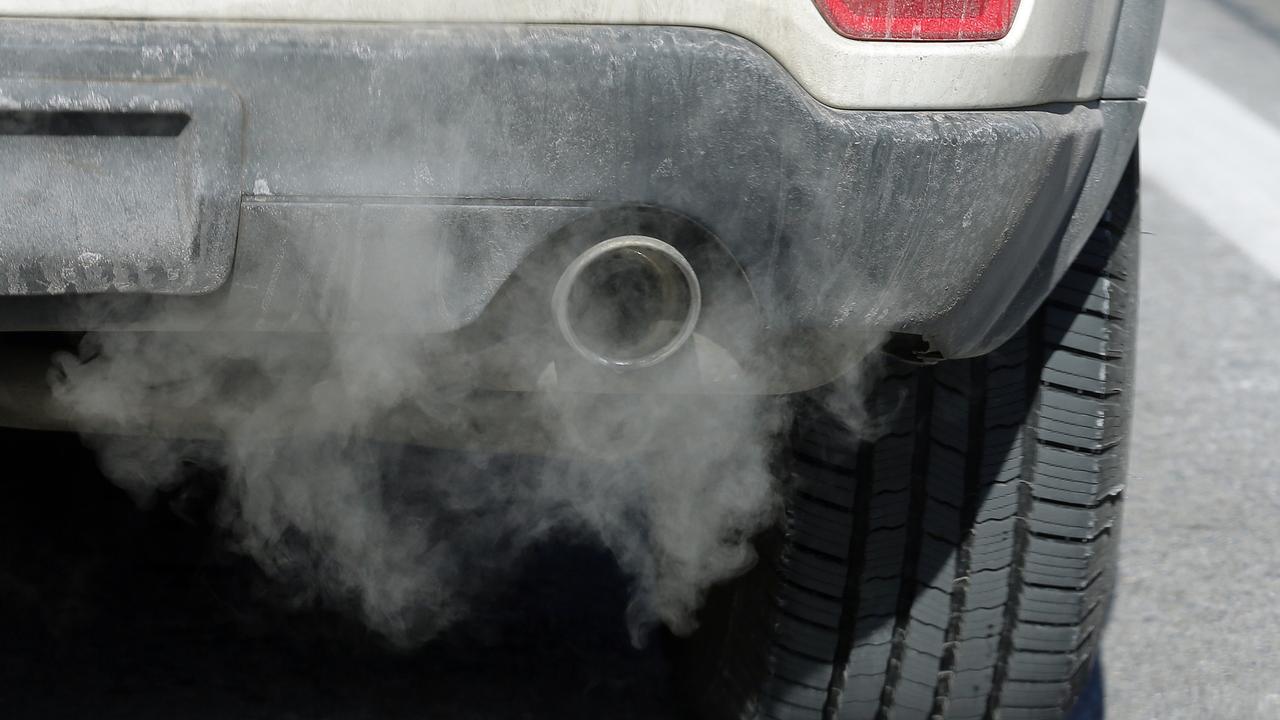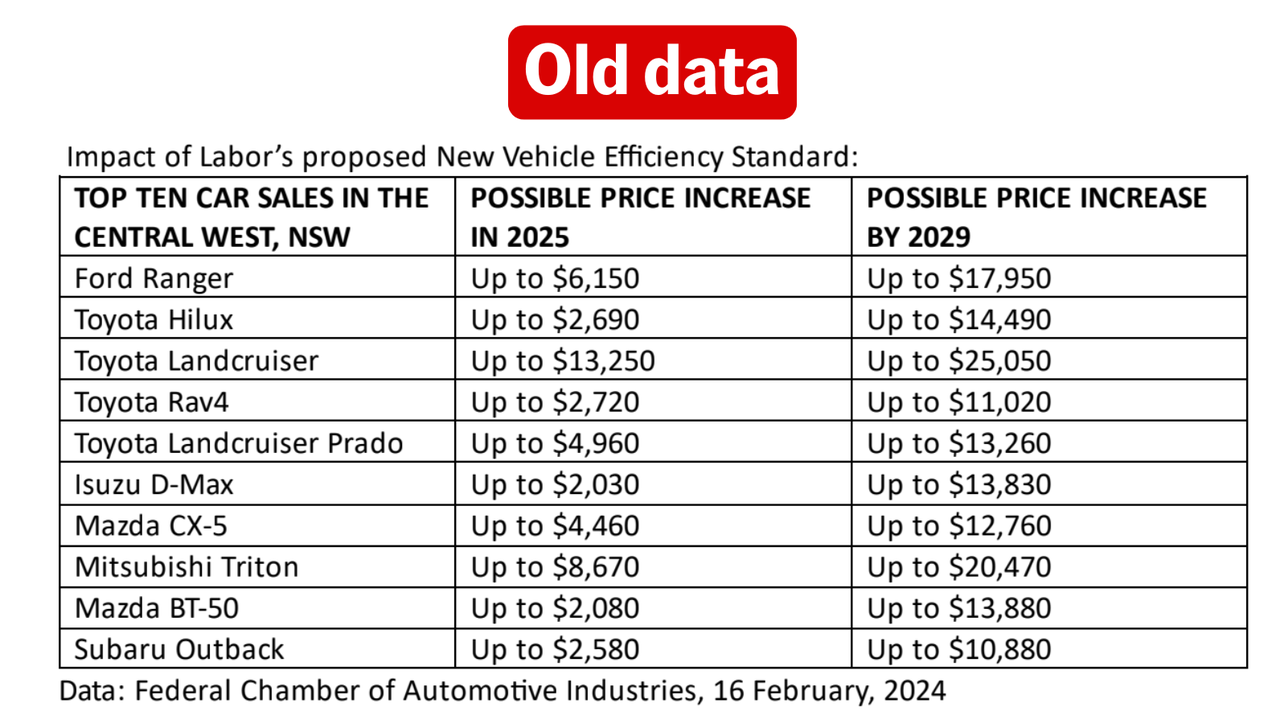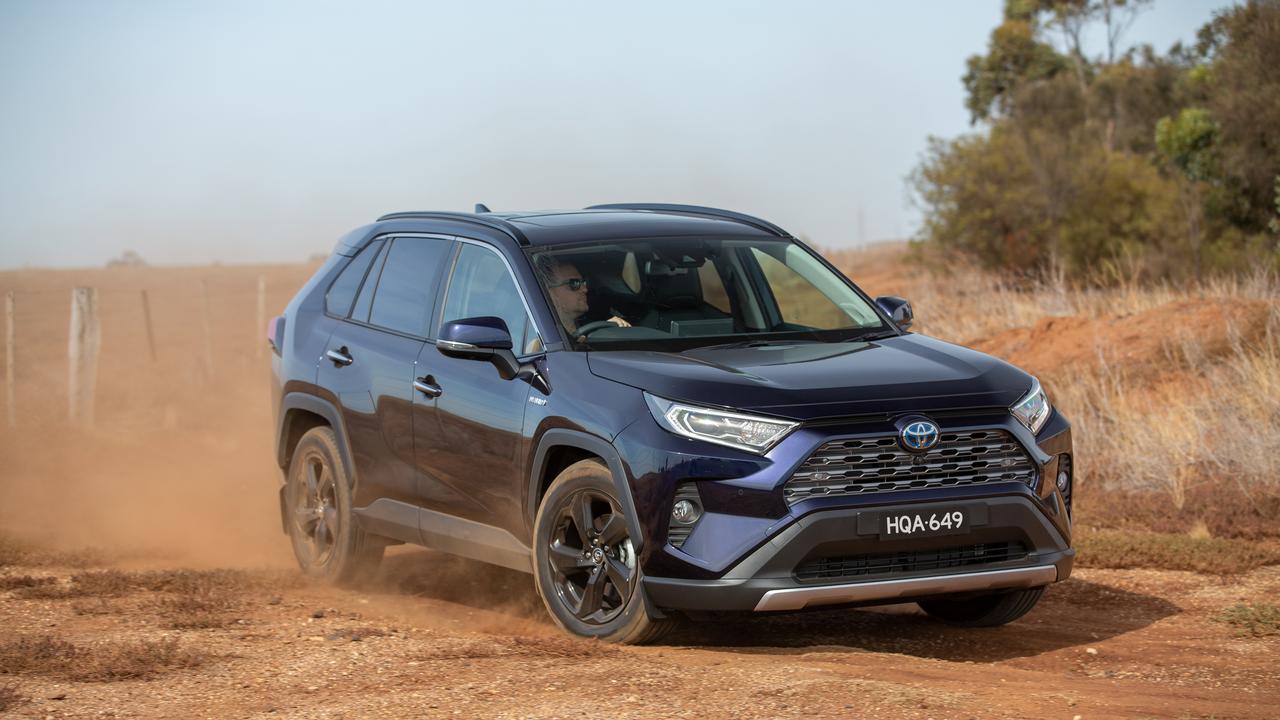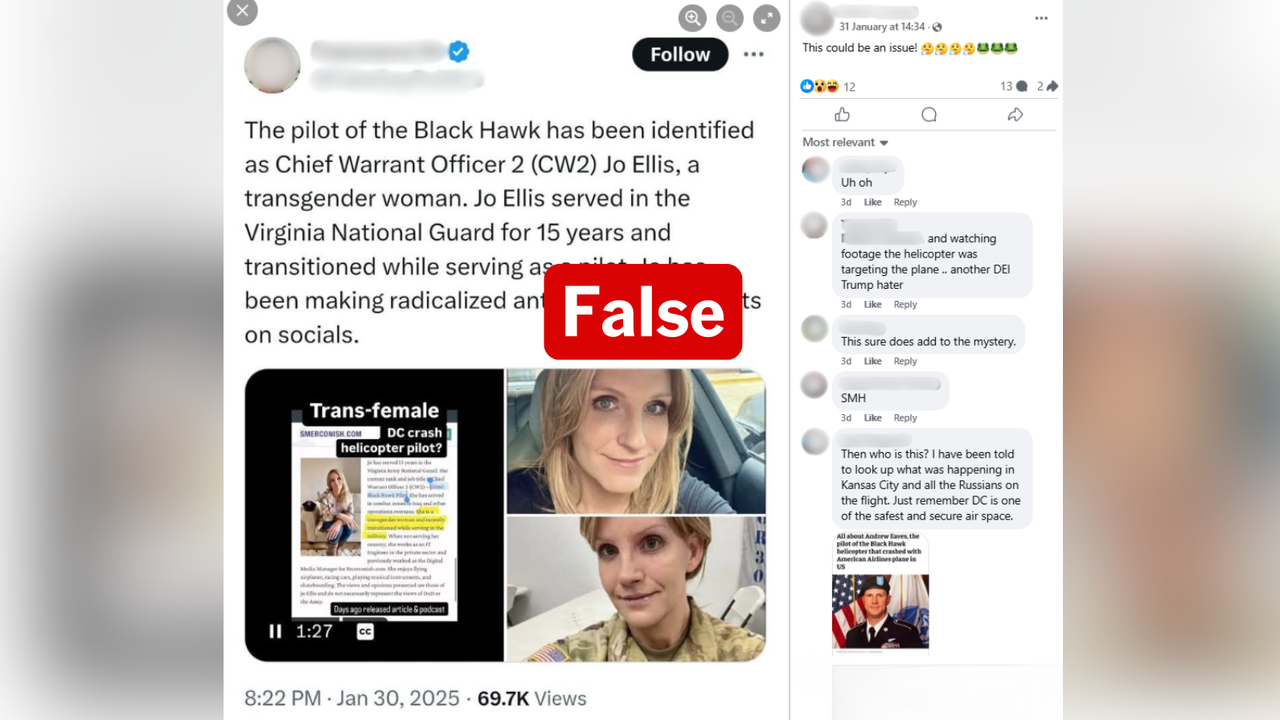WHAT WAS CLAIMED
The NVES will increase the price of a new Toyota RAV4 by almost $3000 and a Ford Everest by $6000 in 2025.
OUR VERDICT
False. The claim is based on outdated figures, and penalties applied under the scheme will not necessarily directly increase the price of a particular vehicle model.
AAP FACTCHECK – Nationals Leader David Littleproud is falsely claiming the New Vehicle Efficiency Standard (NVES) will add nearly $3000 to the price of a Toyota RAV4 and $6000 to a Ford Everest in 2025.
The claim is based on outdated motor industry modelling, and experts say this also misrepresents how the standard works.
AAP FactCheck found no RAV4 models would incur a fee this year under the scheme, while penalties on Ford Everest models were significantly less than claimed, with some receiving a credit.
Mr Littleproud, in an interview with Sky News on January 1, 2025, claimed the NVES would "put a tax on the purchase price of a vehicle you buy at your dealer" (three minutes 10 seconds).
"So it's not just the big four-wheel drives," he said.
"The most popular selling vehicle in Australia – the Ford Everest – will go up by $6000 in purchase price this year, going up to $18,000 as it phases in.
"And then a RAV4 … that's going up by nearly $3000 and going up by over $11,000 over this phase-in period."
Many social media posts make similar claims, sometimes directly quoting Mr Littleproud's statement without attribution.

The Ford Everest is not, in fact, Australia's most popular vehicle – that was the Toyota RAV4 in the month of December 2024, or the Ford Ranger across the year of 2024, according to figures from the Federal Chamber of Automotive Industries (FCAI).
The new rules
The New Vehicle Efficiency Standard Act 2024, which came into effect on January 1, 2025, sets annual emissions targets for vehicles that become more stringent over time.
This splits cars into two classes, passenger vehicles and light commercial vehicles. Passenger vehicles have stricter targets.
If a manufacturer produces vehicles exceeding the emissions target for a particular year, then it must pay $100 for every gram of CO2 per kilometre (g/km) its fleet exceeds the target.
Because this fee is based on the emissions of a manufacturer's entire fleet in a year, a manufacturer may not incur a fee if the vehicles exceeding the target are balanced by those below it.
If a manufacturer exceeds its target in one year, it can also avoid or lower the penalty by being under the target in the following two years.
Likewise, if a manufacturer is under its target, it can accumulate credits to use if it exceeds the targets in the following two years, or it can sell the credits to another manufacturer.
Penalties greatly overstated
A spokesperson from Mr Littleproud's office said his claim was based on figures from the FCAI from February 2024.
These figures weren't publicly available but were supplied to AAP FactCheck, and broadly support his claim.
The figures didn't include the Ford Everest, however the spokesperson confirmed his claim was based on the figures for a Ford Ranger ute, which they said was a similar vehicle.
The FCAI figures claimed the Ranger could increase by $6150 in 2025, rising to $17,950 by 2029.

However, Mr Littleproud's figures greatly overstated the penalties incurred by these vehicles because they were based on a draft version of the policy that was more stringent, and also included some high-emitting vehicles now no longer available.
An FCAI spokesperson said the numbers were based on 2023 sales data and were produced in February 2024 when the government was consulting on the scheme.
Mr Littleproud's office provided more detailed figures from FCAI's projections, which showed the least polluting Ford Ranger model could incur a $450 credit under the scheme in 2025, rising to an $11,350 penalty in 2029.
They also showed the least polluting RAV4 petrol-only model would incur a $250 fee, while all of the hybrid models would attract more than a $3000 credit in 2025.
Outdated projections
However, the use of petrol-only RAV4 vehicles in these projections is outdated because Toyota announced it would exclusively sell hybrid models in Australia as of June 2024, meaning claims the RAV4 would incur a fee in 2025 are incorrect.
The RAV4 that incurred the highest fee in the FCAI modelling emitted 172g/km, whereas the hybrid models emitted between about 107 and 110g/km.
The FCAI spokesperson said the estimates were based on the government's preferred option that it consulted on in early 2024, known as "Option B" (p32-40).
But significant changes were later made to this which reduced the penalties for heavier and higher emitting vehicles such as the Ford Everest, for which AAP FactCheck has provided further details in an appendix.
An FCAI spokesperson acknowledged its February 2024 projections were now "outdated somewhat".

FCAI modelling was based on manufacturers making no changes to their fleet to increase the efficiency of their vehicles, or to sell more low-emissions vehicles to meet the targets and avoid penalties. But Toyota has already ended imports of non-hybrid RAV4s.
Penalties not guaranteed to pass on to buyers
Mr Littleproud implied that the entire fee incurred by a particular vehicle model would be passed on to consumers.
The FCAI spokesperson acknowledged that, while it believed the NVES would put "upward pressure" on the price of vehicles that exceeded the emissions targets, it wasn't possible to accurately estimate how it would affect the price of individual models.
Robin Smit, a transport emissions policy expert at the University of Technology Sydney, has modelled the impact of the NVES policy in two papers, including one funded by Greenpeace Australia-Pacific.
He told AAP FactCheck claims the NVES would increase the purchase price of any vehicle by a specific price were misleading.
"This is not how manufacturers and consumers will be impacted by the standard," Dr Smit said.
"The manufacturers have the freedom and flexibility to adjust their sales mix to meet the target, for example to offer and market more low-emission vehicles to compensate for the sale of high-emitting large diesel/petrol SUVs.
"This is what has already happened overseas, where targets are neatly followed by selling more electric vehicles."
The updated figures
AAP FactCheck calculated the emissions targets for the Toyota RAV4, Ford Everest and Ford Ranger models based on the more lenient rules in the NVES legislation, using the formula in the legislation and departmental advice on how to apply it. These calculations can be seen in the appendix.
This showed none of the RAV4 models available would incur a penalty in 2025, instead gaining a credit between $3390 and $3880.
A Toyota spokesperson said all of its RAV4 models would be well below the emissions targets set for 2025 and 2026, and confirmed AAP FactCheck's calculations were correct.
The highest emitting Everest model would incur a $3210 penalty in 2025, not $6000 as Mr Littleproud claimed.
Two models would gain a $2790 credit, while the average across nine Everest models was a $420 penalty.
Of the 21 Ford Ranger models, only six would incur a penalty in 2025 and on average the Rangers received a $910 credit.
The largest credit was $3080, while the largest penalty was $4410 for the Raptor, which was by far the most polluting model.
If penalties incurred would be passed on to consumers, as Mr Littleproud has assumed, then in theory cost savings could be passed on, too.
The targets will become more stringent over time, however, so by 2029 all current RAV4 models would miss their emissions targets and incur a penalty ranging from $4420 to $4910, not $11,000 as Mr Littleproud claimed.
All current Everest models would also incur a penalty ranging from $7210 to $13,210, while all current Ranger models would incur a penalty, ranging from $6920 to $14,410.
This assumes, however, that the manufacturers make no changes to their models to increase efficiency.
Hussein Dia, a transport expert at Swinburne University of Technology, told AAP FactCheck that it was likely the vehicle industry would offer more low-emissions vehicles in response to the rules, therefore reducing the penalties incurred, adding that "Mr Littleproud's claim is not correct".
The factors used in the complex equation to calculate a vehicle's emissions target are also expected to be updated over time, making accurate projections to 2029 impossible.
AAP FactCheck is an accredited member of the International Fact-Checking Network. To keep up with our latest fact checks, follow us on Facebook, Twitter and Instagram.












